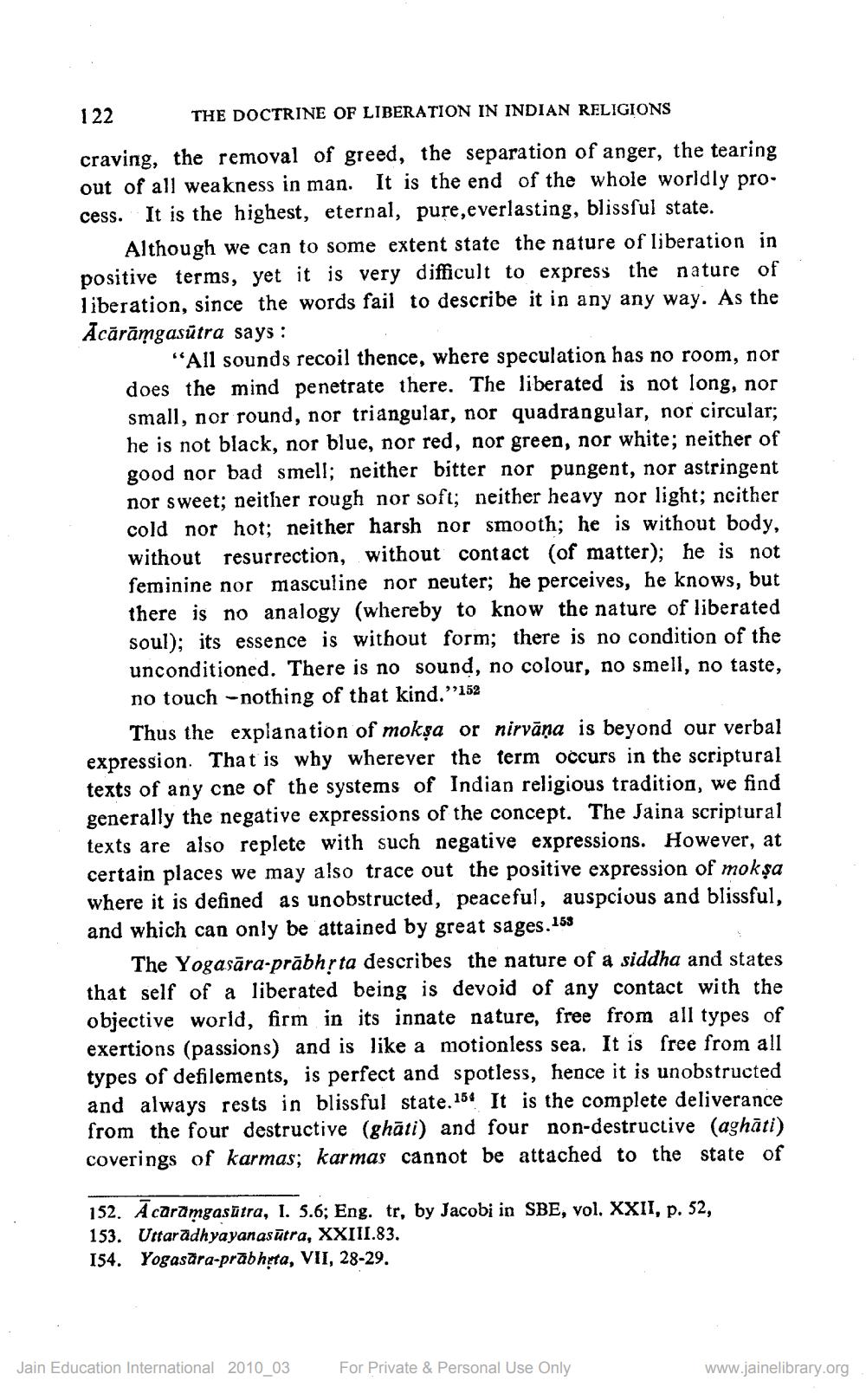________________
122
THE DOCTRINE OF LIBERATION IN INDIAN RELIGIONS
craving, the removal of greed, the separation of anger, the tearing out of all weakness in man. It is the end of the whole worldly process. It is the highest, eternal, pure, everlasting, blissful state.
Although we can to some extent state the nature of liberation in positive terms, yet it is very difficult to express the nature of liberation, since the words fail to describe it in any any way. As the Ācārāmgasūtra says:
"All sounds recoil thence, where speculation has no room, nor does the mind penetrate there. The liberated is not long, nor small, nor round, nor triangular, nor quadrangular, nor circular; he is not black, nor blue, nor red, nor green, nor white; neither of good nor bad smell; neither bitter nor pungent, nor astringent nor sweet; neither rough nor soft; neither heavy nor light; neither cold nor hot; neither harsh nor smooth; he is without body, without resurrection, without contact (of matter); he is not feminine nor masculine nor neuter; he perceives, he knows, but there is no analogy (whereby to know the nature of liberated soul); its essence is without form; there is no condition of the unconditioned. There is no sound, no colour, no smell, no taste, no touch -nothing of that kind.”’152
Thus the explanation of mokşa or nirvāņa is beyond our verbal expression. That is why wherever the term occurs in the scriptural texts of any cne of the systems of Indian religious tradition generally the negative expressions of the concept. The Jaina scriptural texts are also replete with such negative expressions. However, at certain places we may also trace out the positive expression of mokşa where it is defined as unobstructed, peaceful, auspcious and blissful, and which can only be attained by great sages. 153
The Yogasāra-prābhrta describes the nature of a siddha and states that self of a liberated being is devoid of any contact with the objective world, firm in its innate nature, free from all types of
kertions (passions) and is like a motionless sea. It is free from all types of defilements, is perfect and spotless, hence it is unobstructed and always rests in blissful state. 154 It is the complete deliverance
m the four destructive (ghāti) and four non-destructive (aghāti) coverings of karmas; karmas cannot be attached to the state of
152. A carāmgasutra, I. 5.6; Eng. tr, by Jacobi in SBE, vol. XXII, p. 52, 153. Uttaradhyayanasūtra, XXIII.83. 154. Yogasära-prabhta, VII, 28-29.
Jain Education International 2010_03
For Private & Personal Use Only
www.jainelibrary.org




